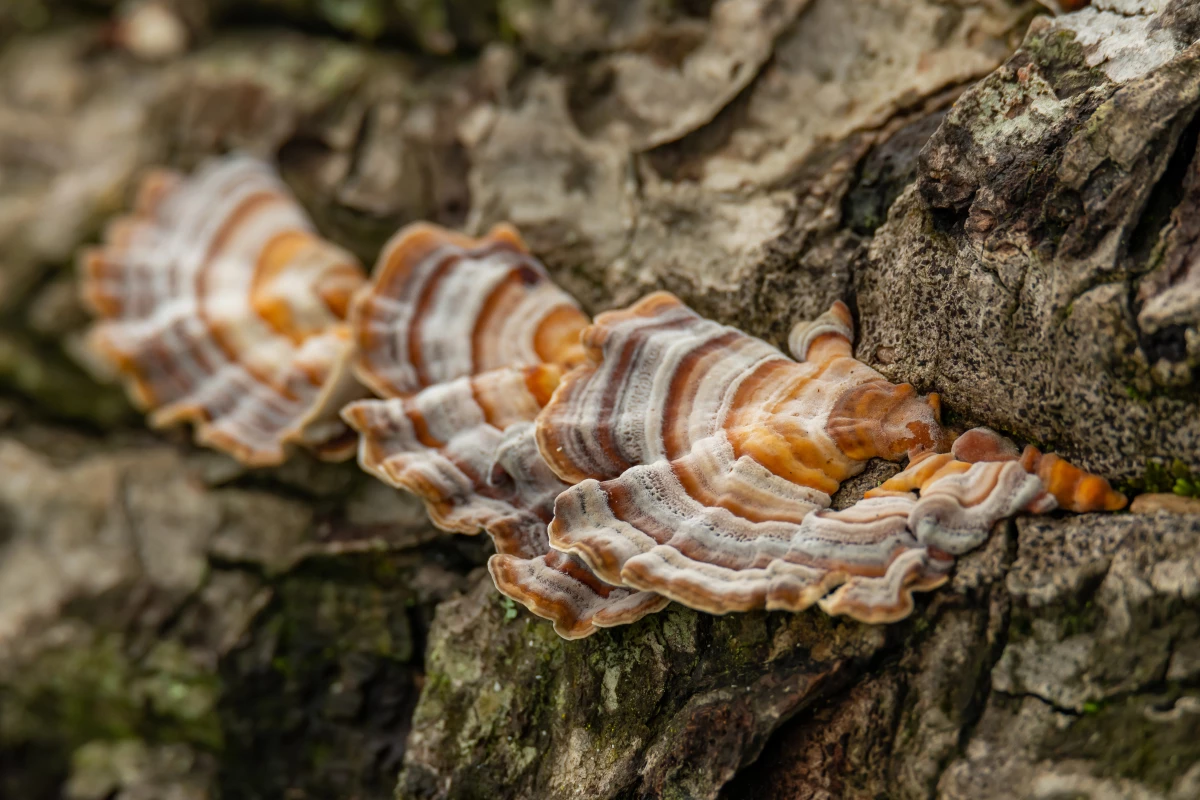Science
Turkey Tail Mushroom Coating Offers Eco-Friendly Plastic Alternative

Research from the University of Maine has unveiled a groundbreaking alternative to single-use plastic wrap and synthetic coatings for paper cups. By combining the edible turkey tail mushroom, scientifically known as Trametes versicolor, with wood fiber solutions, the team developed a sustainable, waterproof coating that could significantly reduce plastic waste.
The study, published in the journal Langmuir, focused on creating a food-safe coating resistant to water, oil, and grease. Researchers experimented with the mycelium, a root-like structure of the mushroom, which forms a dense network of feather-like strands. This mycelium was paired with tiny wood cellulose fibers known as nanofibrils, commonly used in paper-making, to engineer an effective barrier against various liquids.
“Our hope is that by providing more ways to potentially reduce our reliance on single-use plastics, we can help lessen the waste that ends up in landfills and the ocean,” said Assoc. Prof. Caitlin Howell, the study’s corresponding author. “Nature offers elegant, sustainable solutions to help us get there.”
Innovative Coating Process
The researchers applied the mycelium and wood fiber mixture in thin layers on various surfaces, including paper, denim, polyester felt, and birch wood veneer. After being dried in an oven for a day, a robust waterproof coating was formed within three days of growth under warm conditions. By the fourth day, the coating exhibited distinctive yellow, orange, or tan markings.
Tests conducted on the coated materials demonstrated that water droplets bead up, while those on untreated surfaces either spread out or were absorbed. The coating also effectively repelled other liquids, including fuel n-heptane, toluene, and castor oil, indicating its potential for diverse applications beyond just food protection.
Broader Applications of Mycelium Technology
The use of mycelium in various fields is gaining momentum. For instance, researchers at Nanyang Technological University in Singapore have developed tiles from oyster mushrooms and bamboo scraps, designed to enhance energy efficiency in buildings. These tiles mimic the texture of elephant skin and are intended to regulate temperature.
In a different innovation, Newcastle University in Britain is working on mycocrete, a type of concrete that combines mycelium with grains and other materials. This emerging technology highlights the versatility of mycelium as a sustainable building material.
The findings from the University of Maine not only contribute to the growing body of research on biodegradable alternatives to plastics but also emphasize the importance of harnessing natural materials for innovative solutions. As the world grapples with plastic pollution, advancements like these offer hope for a more sustainable future.
-

 Science2 weeks ago
Science2 weeks agoUniversity of Hawaiʻi Joins $25.6M AI Project to Monitor Disasters
-

 Business2 weeks ago
Business2 weeks agoForeign Inflows into Japan Stocks Surge to ¥1.34 Trillion
-

 Top Stories3 weeks ago
Top Stories3 weeks agoMarc Buoniconti’s Legacy: 40 Years Later, Lives Transformed
-

 Top Stories3 weeks ago
Top Stories3 weeks agoBOYNEXTDOOR’s Jaehyun Faces Backlash Amid BTS-TWICE Controversy
-

 Health3 weeks ago
Health3 weeks agoInnovative Surgery Restores Confidence for Breast Cancer Patients
-

 Sports1 month ago
Sports1 month agoSteve Kerr Supports Jonathan Kuminga After Ejection in Preseason Game
-

 Science1 month ago
Science1 month agoChicago’s Viral ‘Rat Hole’ Likely Created by Squirrel, Study Reveals
-

 Lifestyle1 month ago
Lifestyle1 month agoKelsea Ballerini Launches ‘Burn the Baggage’ Candle with Ranger Station
-

 Entertainment1 month ago
Entertainment1 month agoZoe Saldana Advocates for James Cameron’s Avatar Documentary
-

 Top Stories3 weeks ago
Top Stories3 weeks agoCarson Wentz Out for Season After Shoulder Surgery: Urgent Update
-

 Politics1 month ago
Politics1 month agoDallin H. Oaks Assumes Leadership of Latter-day Saints Church
-

 Lifestyle1 month ago
Lifestyle1 month agoDua Lipa Celebrates Passing GCSE Spanish During World Tour









